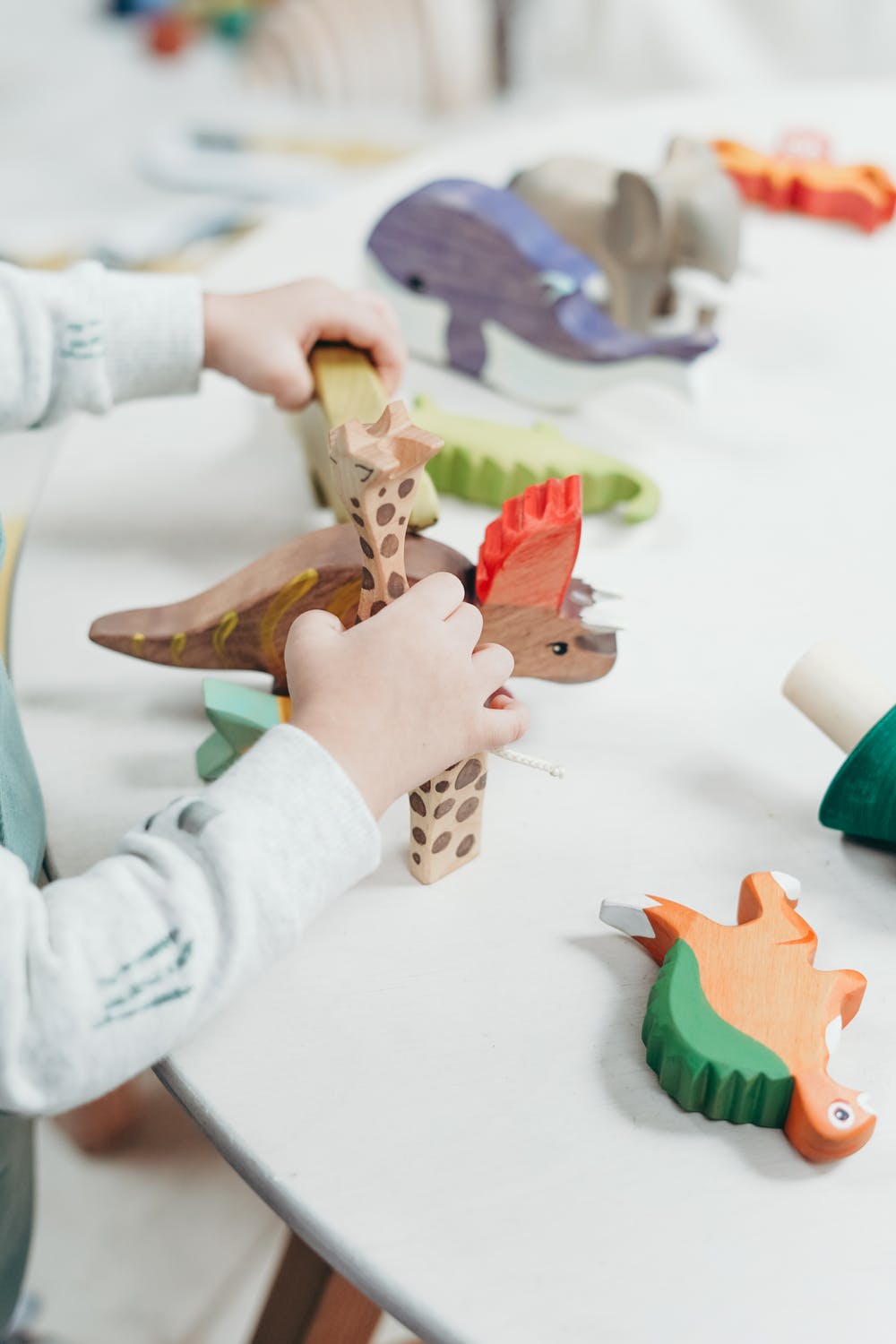Imaginative Play: How Your Child’s ‘Pirate Ship’ Might Just Be the Next Big Thing in Home Renovation
 Through imaginative #play, children engage in role-playing scenarios that encourage them to think critically, solve problems, and develop #empathy.
Through imaginative #play, children engage in role-playing scenarios that encourage them to think critically, solve problems, and develop #empathy.
By fostering an environment that nurtures imaginative play, #parents and caregivers can transform everyday spaces into vibrant realms of adventure, creativity, and learning, ultimately shaping the next generation of thinkers and creators.
Imaginative Play
Engaging in activities like building pirate ships or embarking on themed adventures enables children to explore their creativity and develop essential life skills. ChildCareEd shares how it can also inspire innovative ideas that extend into various aspects of life, including #home renovation.
Imaginative play encompasses a variety of activities that are crucial for a child's #development:
-
Creativity: Children use their imagination to invent stories, characters, and scenarios, stimulating their creative thinking. This unstructured play allows them to explore ideas without limitations, encouraging them to think outside the box.
-
Problem-Solving: During imaginative play, children often encounter challenges that require them to think critically and devise solutions. For instance, when they decide how to build their pirate ship or negotiate roles in a treasure hunt, they practice essential problem-solving skills.
-
Social Skills: Role-playing different characters helps children understand social dynamics and develop empathy. By stepping into someone else's shoes, they learn to navigate relationships and cooperate with peers, which is vital for their social development.
-
Emotional Development: Imaginative play provides a #safe space for children to #express their feelings and experiment with different emotional responses. This can help them process their emotions and build resilience.
-
Language Skills: Engaging in storytelling and role-playing enhances children's vocabulary and communication skills. As they interact with others during play, they learn to articulate their thoughts and understand the nuances of #language.
To encourage imaginative play at home, consider the following tips:
-
Provide Open-Ended Materials: Items like cardboard boxes, fabric, and art supplies can inspire creativity. Children can transform these materials into anything from pirate ships to castles.
-
Encourage Role-Playing: Suggest scenarios for children to act out, such as a pirate adventure or a treasure hunt. This can help spark their imagination and #lead to collaborative play.
-
Limit Structured Activities: Allow for unstructured playtime where children can explore their ideas #freely. This downtime is essential for fostering creativity.
-
Participate in Play: Join in on their imaginative games when invited. This not only strengthens your bond but also encourages them to express their ideas more fully.
References
- https://www.encourageplay.com/blog/pirate-pretend-play-pinterest-in-real-life
- https://www.topteachingideas.com/pirate-teaching-theme.html
- https://www.miracle-recreation.com/blog/importance-of-imagination-in-child-development/
- https://www.lego.com/en-us/discover/benefits-of-pretend-play
- https://guide #craft.com/blogs/news/5-benefits-of-dress-up-and-pretend-play?srsltid=AfmBOor-vmjphHYWGaO0R_ZhbrKbGGPnjXz-OdKMpa5jj6gT3sh3Rm80
- https://www.startearly.org/post/imaginative-play/
- https://www.beginlearning.com/parent-resources/dramatic-play/
- https://poppyseedplay.com/blogs/calm/creative-playroom-ideas?srsltid=AfmBOoor-S6oBu8u4RKdZr7wm3YqeHa8HcQ5nvzlLkMAFd62RafUMFFB
- https://petitemodernlife.com/home-indoor- #playground-ideas/
- https://www.quora.com/Many-parents-believe-that-children-improve-their-creativity-if-they-play-with-many-kinds-of-toys-I-believe-less-toys-makes-children-more-creative-because-they-have-to-create-new-toys-from-the-limited-resource-Which
- https://www.scholastic.com/parents/kids-activities-and-printables/activities-for-kids/arts-and-craft-ideas/importance-pretend-play.html
- https://avenlur.com/pages/guide-to-pretend-play-for-kids?srsltid=AfmBOorvhSt1h5rL0ZuO7Dgp3koJmrph6uQSWW9rAp9S2PiovNCgOrTx
- https://blog.lovevery.com/skills-stages/pretend-play/
- https://www.mommysfabulousfinds.com/take-summer-playtime-to-the-next-level-with-antsy-pants-build-play-kits/
- https://www.amazon.com/ArtCreativity-Pirate-Detailed-Playset-Excellent/dp/B07DLB6KXF
- https://sweetminimoments.com/2024/03/21/a-guide-to-bucks-county-playgrounds-plus-a-few-extra/
- https://www.rasmussen.edu/degrees/education/blog/why-dramatic-play-matters/
- https://www.scottsdalelibrary.org/ #youth/100-best-picturebooks
Home Renovation Ideas for Families
By incorporating imaginative play structures, such as pirate ships or other creative kits, families can create environments that inspire creativity and joy.
Here are some home renovation ideas that can help families integrate imaginative play into their living spaces:
-
Themed Playrooms:
- Design a playroom around a specific theme, such as a pirate ship, jungle adventure, or outer space. Use wall decals, themed furniture, and accessories to create an immersive environment.
- Incorporate a reading nook with themed books that align with the room's design, encouraging literacy alongside imaginative play.
-
Multifunctional Spaces:
- Create a multifunctional area that serves as both a play space and a family gathering spot. Use furniture that can be easily rearranged or transformed, such as foldable tables or modular seating.
- Install storage solutions that keep toys organized yet easily accessible, encouraging children to engage in play without cluttering the space.
-
Outdoor Play Areas:
- If you have a backyard, consider building an outdoor play structure that resembles a pirate ship or fort. This can be a great way to encourage #outdoor-play and physical activity.
- Enhance the outdoor experience by adding elements like a sandbox, climbing wall, or water play area, promoting exploration and adventure.
-
Creative Use of Space:
- Transform underutilized spaces, such as attics or basements, into imaginative #play-areas. These can be designed as secret hideouts or adventure zones, complete with climbing structures or obstacle courses.
- Use curtains or partitions to create separate zones within a larger room, allowing for different play activities to occur simultaneously and catering to various interests.
-
Interactive Wall Features:
- Install chalkboard or whiteboard walls where children can draw, write, and express their creativity. This can be a fun way to encourage artistic expression and storytelling.
- Consider magnetic walls where kids can attach various shapes and figures, allowing for endless creative possibilities and interactive play.
-
Incorporate Technology Wisely:
- Use technology to enhance imaginative play without overwhelming it. For example, interactive projectors can create dynamic environments for storytelling or role-playing.
- Ensure that any tech integration encourages active participation rather than passive consumption, fostering #engagement and creativity.
References
- https://speechblubs.com/blog/play-activities-for-child-with-autism/
- https://www.beginlearning.com/parent-resources/dramatic-play/
- https://avenlur.com/pages/guide-to-pretend-play-for-kids?srsltid=AfmBOorvhSt1h5rL0ZuO7Dgp3koJmrph6uQSWW9rAp9S2PiovNCgOrTx
- https://www.mommysfabulousfinds.com/take-summer-playtime-to-the-next-level-with-antsy-pants-build-play-kits/
- Imaginative Play: How Your Child’s ‘Pirate Ship’ Might Just Be the Next Big Thing in Home Renovation
- The Family Day Care Chronicles: Tales of Laughter, Learning, and Unexpected Adventures
- How your child's sensory toys serve as portals to different imaginative worlds
- Tiny Hands, Big Dreams: Fostering Creativity in Preschoolers
- How to Foster Early Literacy Skills
- How to Foster Early Literacy Skills
- Big Snowflakes, Bigger Milestones: Supporting Child Development Through Seasonal Activities
- 🧠Play with a Purpose: How Play-Based Learning Boosts Brainpower
- 🌟Little Hands, Big Learning: Why Play is the Secret Ingredient to Early Childhood Growth
- 🧠Tiny Minds, Big Discoveries: Nurturing Early Growth and Development
- What’s Going On in a Child’s Brain When They Play?
- Why Emotional Literacy Is the New Literacy
- 💬 What If Every Challenging Behavior Was Actually a Learning Opportunity?